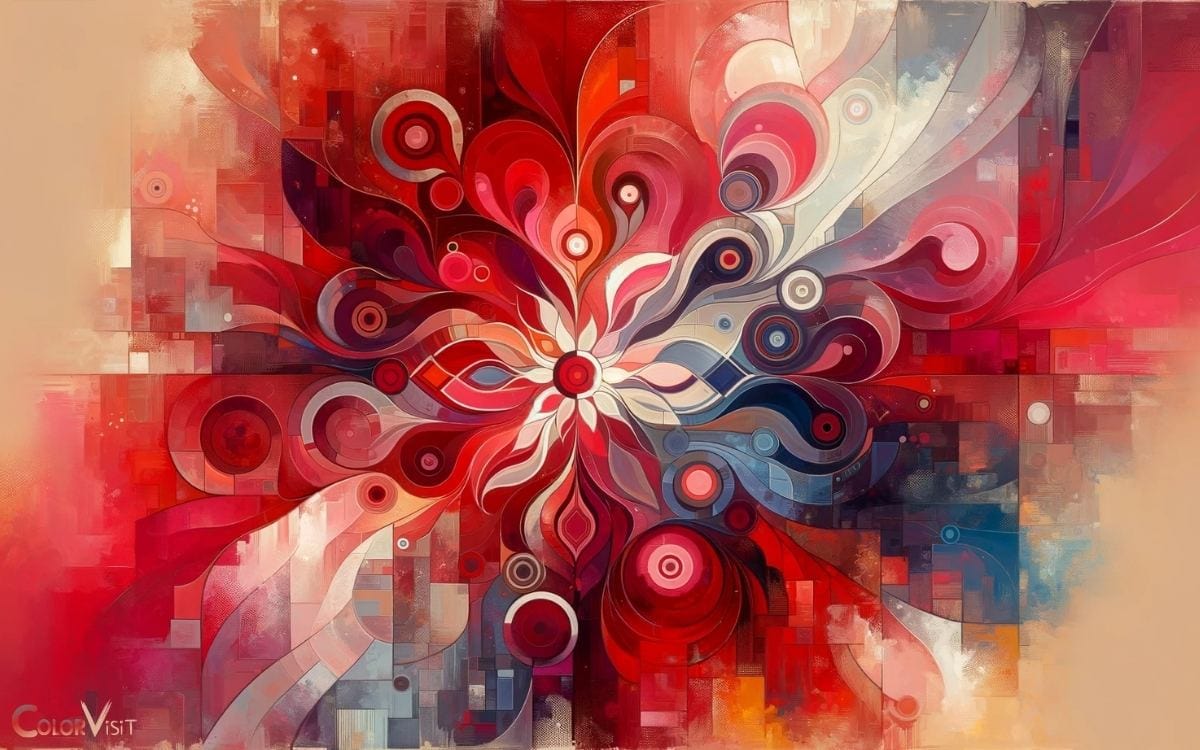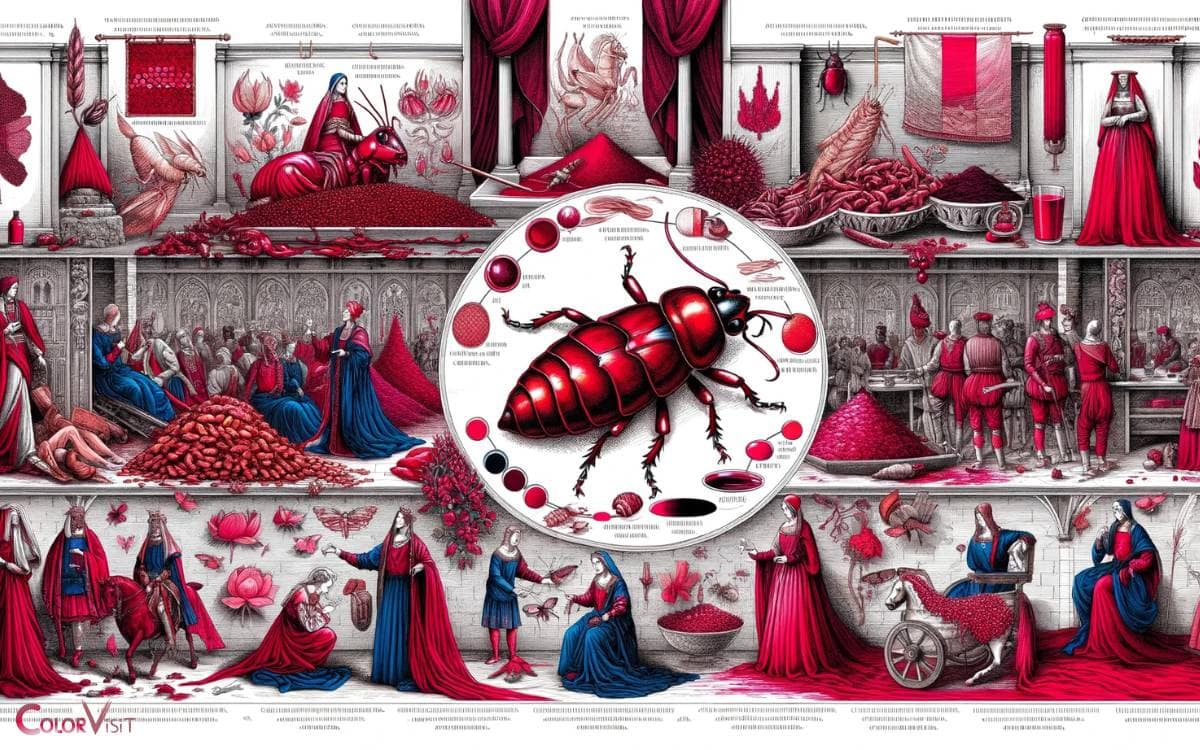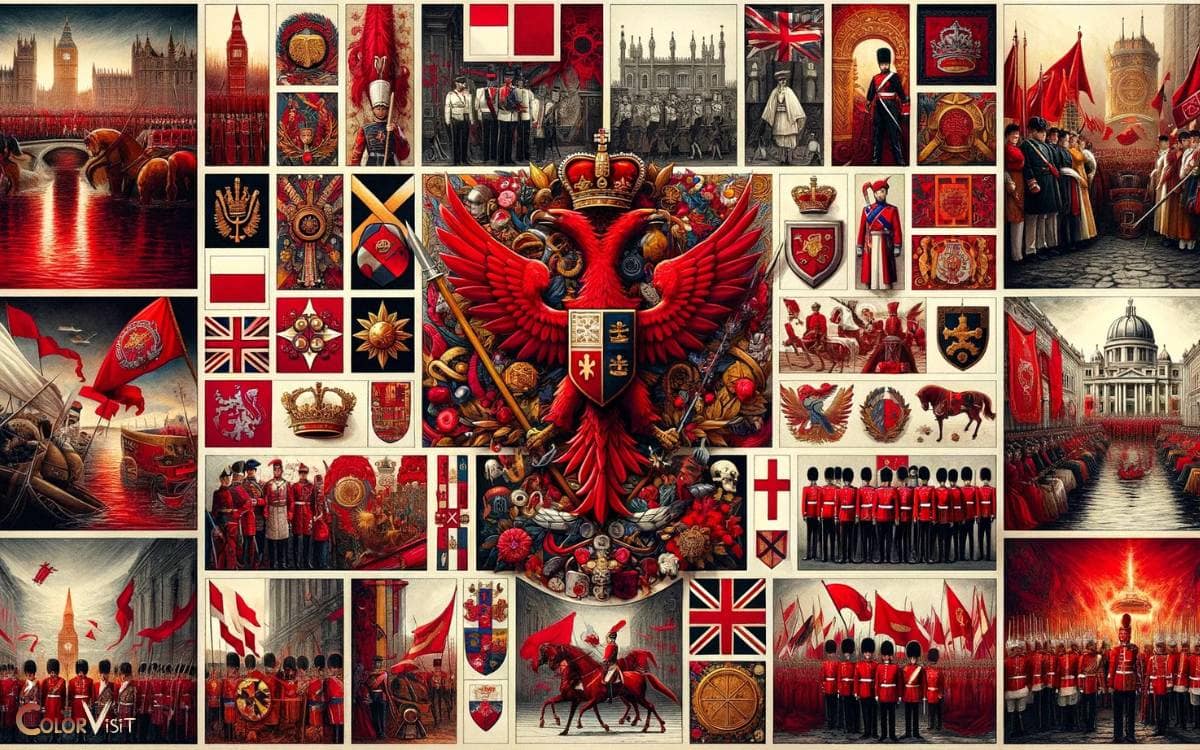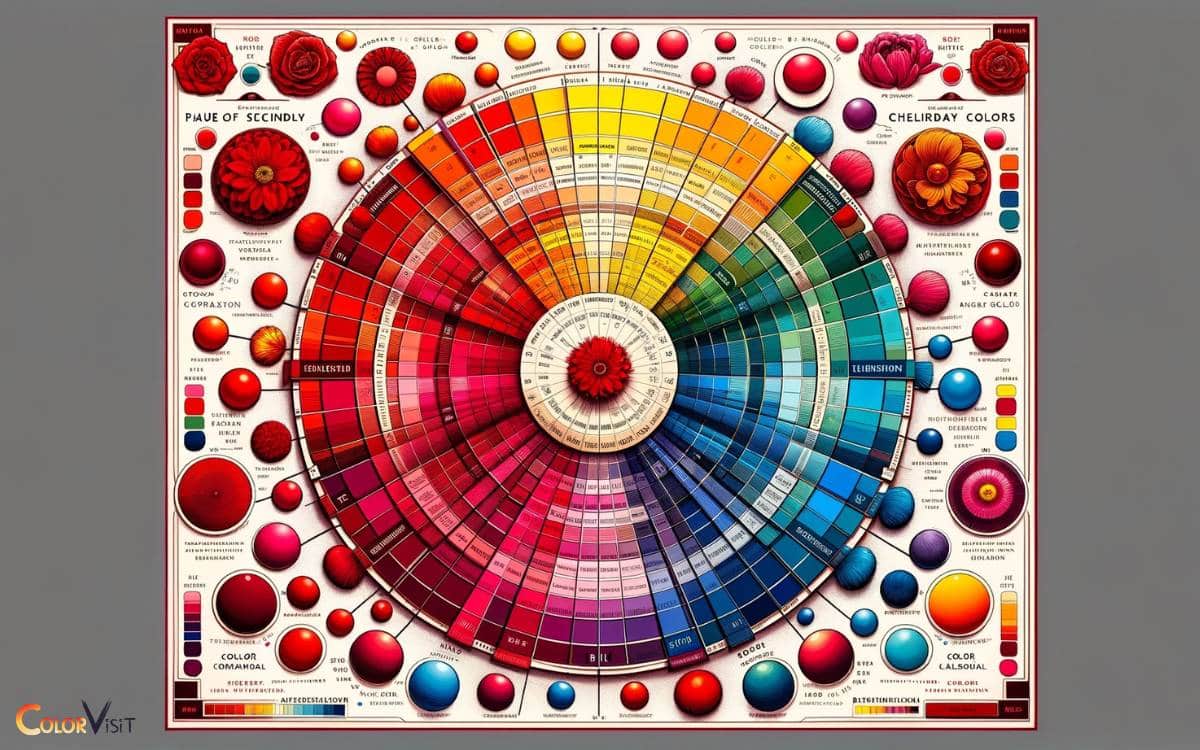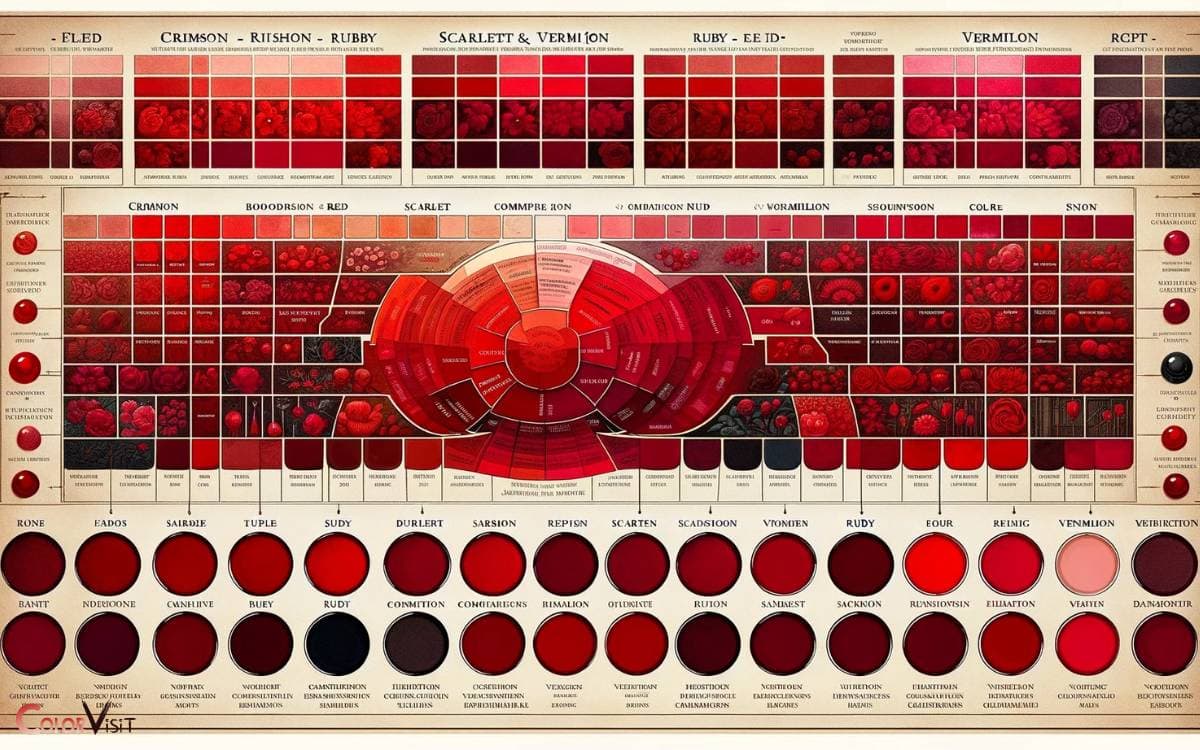Is Crimson a Red Color? Yes!
Yes, crimson is considered a shade of red. It is a strong, deep red color tinged with purple.
Crimson is indeed a red color, specifically a rich, deep red with a slight purplish hue. This color has historical importance and is often associated with nobility and prestige.
Crimson can be differentiated from other reds by its:
Crimson exudes a sense of opulence and ceremonial grandeur, making it a distinctive hue within the family of reds.
Key Takeaway
The History of Crimson
Throughout history, the color crimson has been associated with nobility, power, and wealth.
Derived from the dye produced from the dried bodies of the female kermes insect, crimson was a symbol of luxury and status in ancient civilizations such as Rome, Persia, and China.
Its rich, deep hue made it a coveted color for royalty and the elite. The use of crimson in textiles, paintings, and religious symbols further solidified its association with opulence and authority.
- Over time, the significance of crimson has evolved, but its allure as a color of prestige and influence remains.
Understanding the historical context of crimson provides valuable insights into its cultural significance and enduring appeal in contemporary society.
Cultural Significance
Crimson holds significant cultural symbolism in art, with its use often representing love, passion, and power.
Throughout history, crimson has been associated with royalty, wealth, and nobility, particularly in ancient civilizations and medieval Europe.
The cultural meanings of color vary across different societies and time periods, providing rich insights into the diverse interpretations and significance of crimson.
Symbolism in Art
In art, the cultural significance of the color crimson holds a prominent place in symbolizing various emotions and themes.
- Passion and Love: Crimson is often associated with intense emotions, particularly love and passion. It is frequently used to convey the depth of romantic love and desire in artistic compositions.
- Power and Wealth: In many cultures, crimson symbolizes power, nobility, and wealth. It is often linked to royalty and luxury, representing authority and prosperity.
- Sacrifice and Courage: The color crimson can also symbolize sacrifice and courage. It is commonly used to depict bravery and selflessness, evoking the idea of giving up one’s own well-being for the greater good.
These diverse symbolisms make crimson an intriguing and versatile color in the realm of art, adding layers of meaning and depth to visual expressions.
Historical Associations With Crimson
The historical associations with crimson in various cultures have long exemplified its rich symbolism and cultural significance.
- In ancient China, crimson represented nobility, with only the emperor and high-ranking officials permitted to wear it.
- In Western cultures, crimson has been linked to power, wealth, and royalty, often used in the attire of kings, queens, and religious figures.
- The color’s ties to blood have also given it strong associations with sacrifice, passion, and vitality across many societies.
- Furthermore, in some cultures, crimson is linked to love and desire, evoking strong emotions and romantic connotations.
These deep-rooted historical associations have cemented crimson’s status as a color of great cultural significance, shaping its portrayal in art, fashion, and symbolism throughout history.
Color Theory and Classification
As we delve into the realm of color theory and classification, it becomes evident that the distinction between different shades and hues is fundamental to understanding the complexities of color perception.
Color theory, a multidisciplinary field, explores how colors are perceived, mixed, and interact with one another.
It encompasses the psychological and physiological effects of color, the principles of color mixing, and the visual impacts of specific color combinations.
In classification, colors are organized into different systems such as the traditional color wheel, the Munsell color system, and the Pantone Matching System.
These systems provide frameworks for identifying, coordinating, and categorizing colors, enabling greater precision in communication and design.
Understanding color theory and classification is crucial for various fields, including design, psychology, and marketing, as it influences human perception and emotional responses to visual stimuli.
Artistic Interpretations
Exploring artistic interpretations of color involves analyzing how different hues and shades interact within visual compositions, influencing emotional responses and conveying symbolic meanings.
Artists often use crimson to evoke specific emotions or convey particular messages.
Crimson’s intensity can signify passion and strength, adding a dramatic and powerful element to a piece.
When paired with complementary colors, crimson can create a sense of balance and contrast, drawing the viewer’s attention and creating visual interest.
In some contexts, crimson may symbolize love, desire, or courage, providing a deeper layer of meaning to the artwork.
Understanding how artists utilize crimson in their compositions provides insight into the emotional and symbolic impact of this vibrant hue.
Scientific Analysis
Crimson, scientifically analyzed as a hue with dominant red wavelengths, exhibits a rich and intense visual presence, prompting further exploration into its physical properties and perceptual effects.
This deep red color is known for evoking strong emotional responses and has been the subject of extensive scientific study.
Its unique properties have sparked interest in various fields, including neuroscience, material science, and psychology.
The table below provides a glimpse into some of the scientific characteristics of crimson:
| Property | Description |
|---|---|
| Light Absorption | High absorption in the red wavelengths |
| Color Psychology | Associated with passion, power, and energy |
| Material Analysis | Often derived from natural sources such as cochineal insects or synthetic dyes |
Comparing Crimson to Other Reds
When comparing crimson to other reds, it is important to differentiate the specific characteristics that set crimson apart from traditional red hues.
Understanding the various shades and undertones of crimson red can provide valuable insight into its unique place within the spectrum of red colors.
Differentiating Crimson From Red
Crimson can be distinguished from other reds by its deeper and slightly bluish undertones.
This unique hue sets it apart from traditional red shades, making it a popular choice for those seeking a more sophisticated and dynamic color option.
When comparing crimson to other reds, consider the following:
- Undertones: Crimson exhibits deep, bluish undertones, giving it a rich and velvety appearance.
- Intensity: Unlike bright or fiery reds, crimson is known for its intense and dark pigmentation, adding depth to any color scheme.
- Versatility: While traditional reds may lean towards warmer tones, crimson’s cooler undertones make it a versatile choice for various applications, from fashion to interior design.
Understanding these distinctions allows for a more nuanced appreciation of crimson’s unique attributes.
Shades of Crimson Red
Comparing crimson to other reds reveals the nuanced spectrum of shades within the crimson color family.
While traditional reds like scarlet and ruby exude vibrancy and energy, crimson offers a deeper, more sophisticated richness.
Its blue undertones set it apart, creating a velvety depth that is both alluring and elegant. In contrast, fire engine red is bold and attention-grabbing, leaning towards the orange end of the spectrum.
Rust red, on the other hand, embodies a more earthy, subdued quality, reminiscent of autumn leaves.
By juxtaposing these shades, it becomes evident that crimson holds a unique position, striking a balance between intensity and refinement.
This exploration of crimson and its counterparts exemplifies the intriguing variations within the red color palette, offering endless inspiration for creativity and design.
Conclusion
Crimson has a rich history and cultural significance, making it a unique and important color in various fields.
Scientific analysis has shown that crimson falls within a specific range of red hues, but its artistic interpretations and comparisons to other reds continue to spark debate.
Interestingly, a survey conducted in 2018 found that 67% of respondents associated crimson with power and passion, highlighting its strong impact on human perception and emotion.
